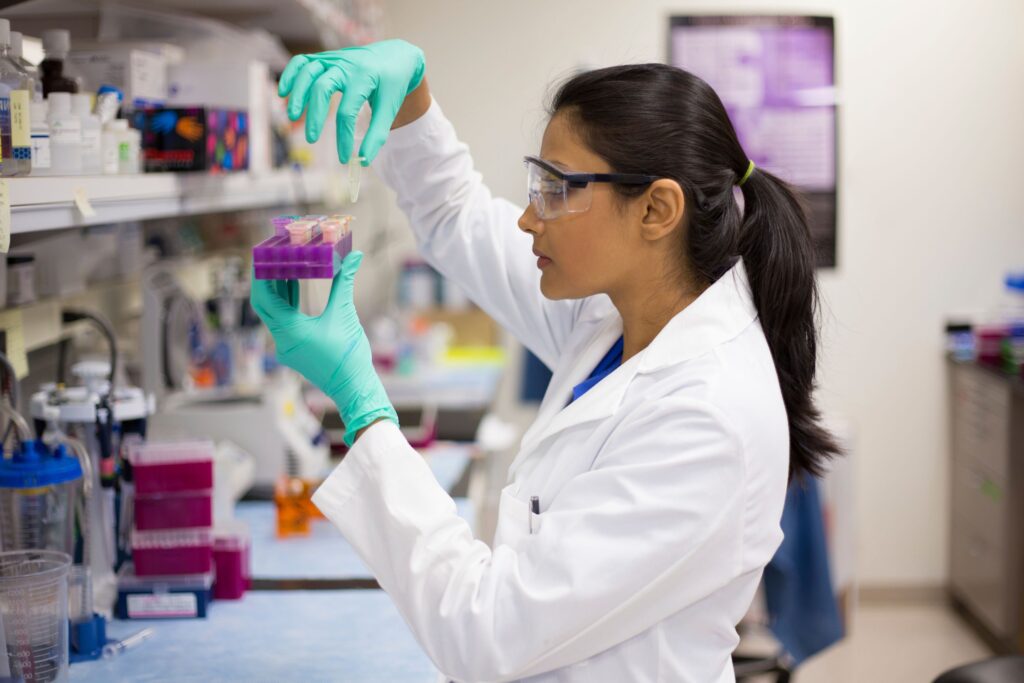August 17, 2020

Download this document here.
As students across Canada get ready to head back to school—some after nearly 6 months of being away—parents have many questions. The first is usually, “Is it safe to send my child back to school during this pandemic?”
Here are some things to consider when making a decision about sending your child with type 1 diabetes (T1D) back to school.
- The situation in your community: The risk ofillness in schools depends to a large extent on how much virus is in a community. Your local public health authority is the best source of this information that can help you decide what the overall risk of illness is for all students.
- The protocols your school has in place: Preventing students and school staff from getting the virus in the first place is the top priority. How is your school ensuring they are following public health guidance to create safer spaces?
- Risk of your child getting sick: Type 1 diabetes is an autoimmune condition. This is not the same as being immune suppressed or immuno-compromised, which increases risk of COVID-19. Children with well-controlled type 1 diabetes face the same risk of getting COVID-19 as their peers without T1D. If children with T1D do get the virus, they are not at a higher risk of complications. But any virus may cause blood sugars to be higher, so proper sick day management is essential.
- How you feel about the risk of illness: During a pandemic, there are many things we can do to reduce our chances of getting sick. But as long as the virus is in a community, there will always be some risk. Everyone feels differently about risk. Ask yourself whether you would be comfortable sending your child to school if they did not have type 1 diabetes.
- The risk of serious illness and death: Children with COVID-19 infections have rarely become sick enough to be admitted to hospital. In fact, the chance of a child being hospitalized with COVID-19 maybe lower than it is for influenza, a virus that occurs in the community each year.
- Your child’s overall health and well-being: The long and unexpected school closures, along with other restrictions on activities and socializing, may affect children’s physical, social, and emotional well-being. When deciding whether to choose remote learning or inperson schooling, think about how your child has done over the past few months.
- Supports for your child with diabetes: Students with diabetes have the right to be safe, supported, and included at school. A global pandemic does not change this. Will your child be well supported in managing their day-to-day diabetes tasks?
Key Points
Type 1 diabetes is an “auto-immune” disorder. This does not mean that people with T1D have a weakened immune system. Children with well-controlled T1D are
not at an increased risk of getting COVID or of more severe COVID illness. Many factors will go into the decision about returning to school, including local conditions, your family situation, your child’s learning style and temperament, and so on. While each family’s situation is different, type 1 diabetes alone should not be considered a medical reason to delay return to school or work. Consider whether your child will receive the supports they need to help manage their diabetes during the school day.
Are children with type 1 diabetes at higher risk of contracting coronavirus?
You may have heard that people with diabetes are at higher risk of developing complications from COVID-19. This is based on information about adults, mostly with type 2 diabetes and not youth with type 1 diabetes. While we lack specific evidence about type 1 diabetes and COVID-19, leading medical experts say that children (and adults under 65 years) with well-managed type 1 diabetes are NOT at increased risk of contracting COVID-19 or developing serious complications from it.
How do I keep my child with type 1 diabetes safe at school?
Take steps to prevent getting coronavirus
When it comes to keeping students safe from COVID-19, all Canadian schools should have measures in place to help stop the spread of the virus. These will vary depending on what part of the country you are in and what is happening with infection rates in your community. Some ways that schools are helping to reduce the risk of COVID-19 include:
- Smaller class sizes or cohorting (keeping small groups of students together for the day)
- Frequent handwashing and/or hand sanitizing
- Enhanced cleaning and disinfecting of schools, especially surfaces that are frequently touched
- Physical distancing
- Wearing masks or cloth face coverings
- Changes to school schedules or other school-day routines
- Not sharing personal or school-owned items like supplies or musical instruments
- Limiting the number of people coming into the school
- Reducing other high-contact situations, such as bus transportation (by driving, walking or cycling to school)
Help your child become familiar with the guidelines for their school and be sure they know what to do. Check your child every day for symptoms of coronavirus, and keep them home if they have symptoms or are sick.
Ensure your child has a diabetes care plan in place
The most important tool for keeping your child with diabetes safe at school is an Individual Care Plan. Many boards have their own forms, or you can use the one on the Diabetes@School website.
The care plan includes all the details of daily diabetes management at school including: when and where to do blood sugar checks and give insulin; how to deal with low and high blood sugars; and who has been designated to provide support to the student. Before school starts, make sure this plan is up to date, and ask your clinic for help if you need it.
If your child requires support for lunchtime insulin from an adult who is not on the school staff, ensure that you contact the school about these arrangements before school starts, since schools may be limiting the number of people allowed on site.
School staff will also need education or training to support your child. The Diabetes@School website has many tools, such as videos, that make it easy to do this training virtually or online if you are unable to do it in person.
Encourage your child to be extra vigilant with hand hygiene, especially when they are checking blood sugars, using their insulin pump, or doing any other diabetes task. You may want to include some extra hand sanitizer and/or wipes in their kits, as well as extra masks or gloves in case an adult at the school needs to provide help.
What if my child gets COVID-19?
Having any virus or illness can affect blood sugars in people with type 1 diabetes. Since the chance of high blood sugar and ketones are increased when your child is ill, make sure you are familiar with sick day guidelines. In particular, know:
- How to check for and manage ketones, which can develop with high blood sugar. You can use a blood ketone meter or urine strips. Ensure you have supplies on hand at all times and be sure to check expiry dates.
- How to prevent DKA (diabetic ketoacidosis), a serious complication of diabetes that needs hospital admission caused by not having enough insulin.
- How and when to use mini doses of glucagon, for children with low blood sugar who are vomiting and cannot take fast-acting sugar. If your clinic has not trained you to do this, ensure you know when to call for help. Have an injectable glucagon kit on hand, even if you have a nasal glucagon product (Baqsimi) as well.
Since anyone with viral symptoms must stay quarantined for 14 days, be sure to always have a supply of prescriptions and diabetes medications at home.
How can I prevent DKA?
Symptoms of DKA (diabetic ketoacidosis) include abdominal pain, nausea, vomiting, high blood sugar and ketones (which cause fruity-smelling breath, and laboured, rapid breathing). Without treatment, DKA can be life threatening.
Here are some things you can do to prevent DKA:
- If your child is sick and/or has ketones, follow your clinic’s sick day guidelines.
- NEVER stop insulin: During an illness, even if your child is not eating well, insulin needs are usually higher.
- If your child uses an insulin pump, make sure you have either syringes or an insulin pen on hand, in case you need to give fast-acting insulin by injection. Have a supply of basal (long-acting) insulin on hand in case your child’s pump malfunctions.
- Keep your child well hydrated with sugar-free fluids.
- Seek help from your team as directed.
If your child is showing signs of DKA, you need to seek medical attention immediately.
What else can I do?
- Do what you can to prevent all family members from contracting coronavirus. That includes practicing physical distancing, hand hygiene, and wearing masks—especially when inside and when physical distancing is not possible. Follow the advice of the Public Health Agency of Canada and your local public health authorities.
• To help minimize possible exposure, know what others in your circle are doing to prevent illness, including child care providers, friends outside of school, and extended family. If your child is taking part in extracurricular activities, ask what precautions are being taken.
• Don’t send your child to school if they have any symptoms of coronavirus.
• Ensure all your child’s vaccines are up to date and that they get an influenza vaccine as soon as they are available in the fall.
For more information:
Developed by Diabetes@School (Canadian Paediatric Society, Canadian Pediatric Endocrine Group, Diabetes Canada) and JDRF Canada, in collaboration with the diabetes teams from the Children’s Hospital of Eastern Ontario (Ottawa) and the IWK Health Centre (Halifax).







 In recent years, better ways to control blood sugar levels and blood pressure have led to a decrease in kidney-related complications among the type 1 diabetes (T1D) population. However, kidney disease remains one of the leading complications of diabetes, including the need for dialysis or kidney transplant. Identifying strategies to reduce kidney complications has been a key focus of JDRF’s research strategy. To date, several studies have demonstrated that individuals with higher levels of uric acid in their blood are more susceptible to reduced kidney function. This led to the
In recent years, better ways to control blood sugar levels and blood pressure have led to a decrease in kidney-related complications among the type 1 diabetes (T1D) population. However, kidney disease remains one of the leading complications of diabetes, including the need for dialysis or kidney transplant. Identifying strategies to reduce kidney complications has been a key focus of JDRF’s research strategy. To date, several studies have demonstrated that individuals with higher levels of uric acid in their blood are more susceptible to reduced kidney function. This led to the